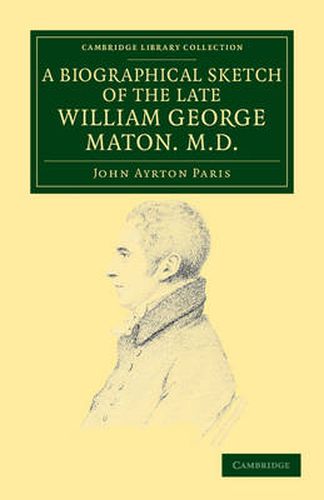Readings Newsletter
Become a Readings Member to make your shopping experience even easier.
Sign in or sign up for free!
You’re not far away from qualifying for FREE standard shipping within Australia
You’ve qualified for FREE standard shipping within Australia
The cart is loading…






English physician William George Maton (1774-1835) was a polymath who had a special interest in botany: a shell and a parrot were among species named in his honour. His writings on natural history included a catalogue of the plant and animal life around Salisbury, Wiltshire, which was published posthumously in 1843 and is reissued as the second part of this composite work. The first part contains a sketch of Maton’s life and work by fellow physician and writer John Ayrton Paris (c. 1785-1856), first presented to the Royal College of Physicians, and subsequently published in 1838. Paris discusses Maton’s early life, his contributions to the growing field of botany, his other scientific and antiquarian interests, and his distinguished medical career, during which he was appointed physician-extraordinary to Queen Charlotte, wife of George III, and later physician-in-ordinary to the duchess of Kent and the young Princess (later Queen) Victoria.
$9.00 standard shipping within Australia
FREE standard shipping within Australia for orders over $100.00
Express & International shipping calculated at checkout
English physician William George Maton (1774-1835) was a polymath who had a special interest in botany: a shell and a parrot were among species named in his honour. His writings on natural history included a catalogue of the plant and animal life around Salisbury, Wiltshire, which was published posthumously in 1843 and is reissued as the second part of this composite work. The first part contains a sketch of Maton’s life and work by fellow physician and writer John Ayrton Paris (c. 1785-1856), first presented to the Royal College of Physicians, and subsequently published in 1838. Paris discusses Maton’s early life, his contributions to the growing field of botany, his other scientific and antiquarian interests, and his distinguished medical career, during which he was appointed physician-extraordinary to Queen Charlotte, wife of George III, and later physician-in-ordinary to the duchess of Kent and the young Princess (later Queen) Victoria.